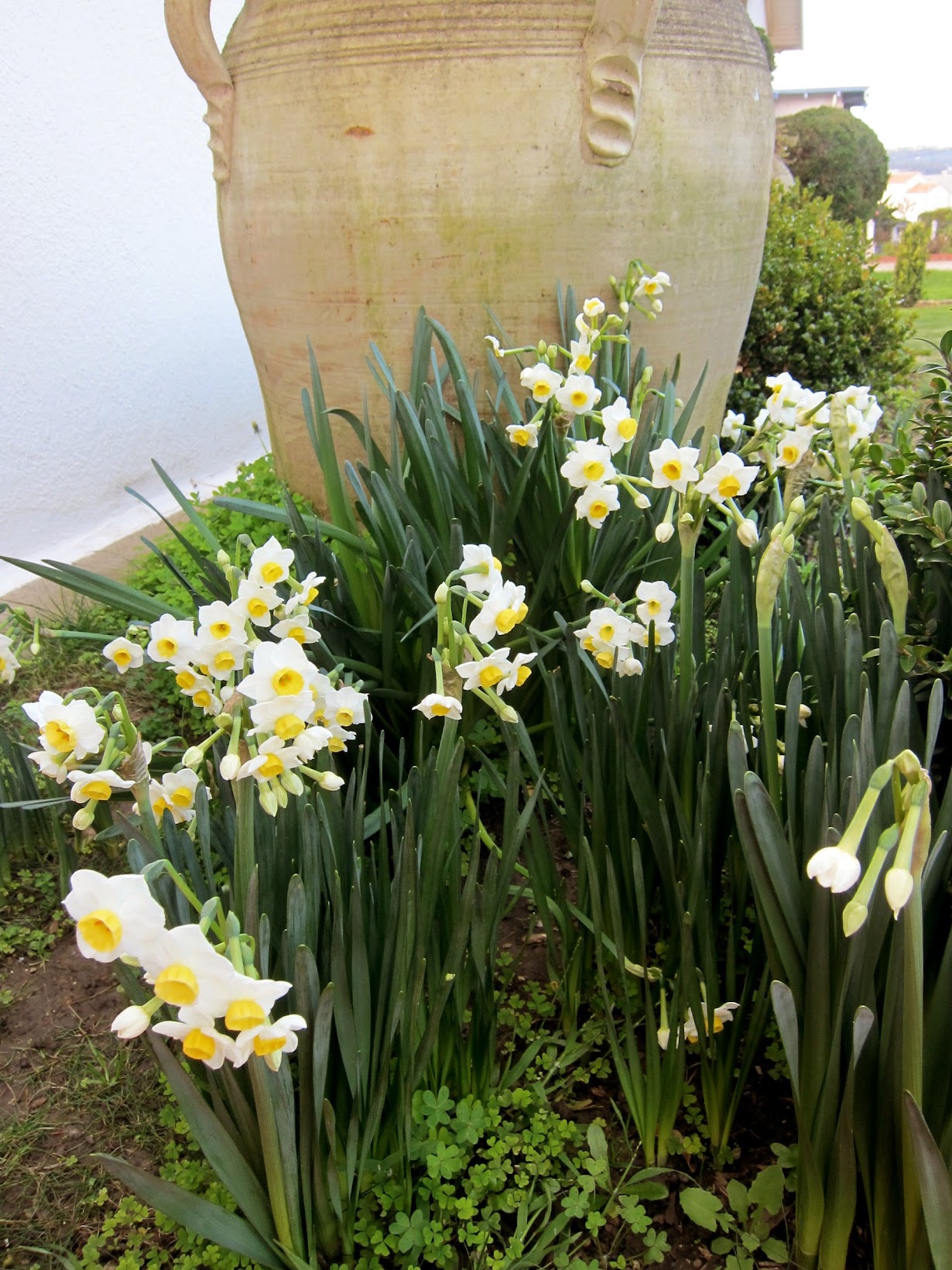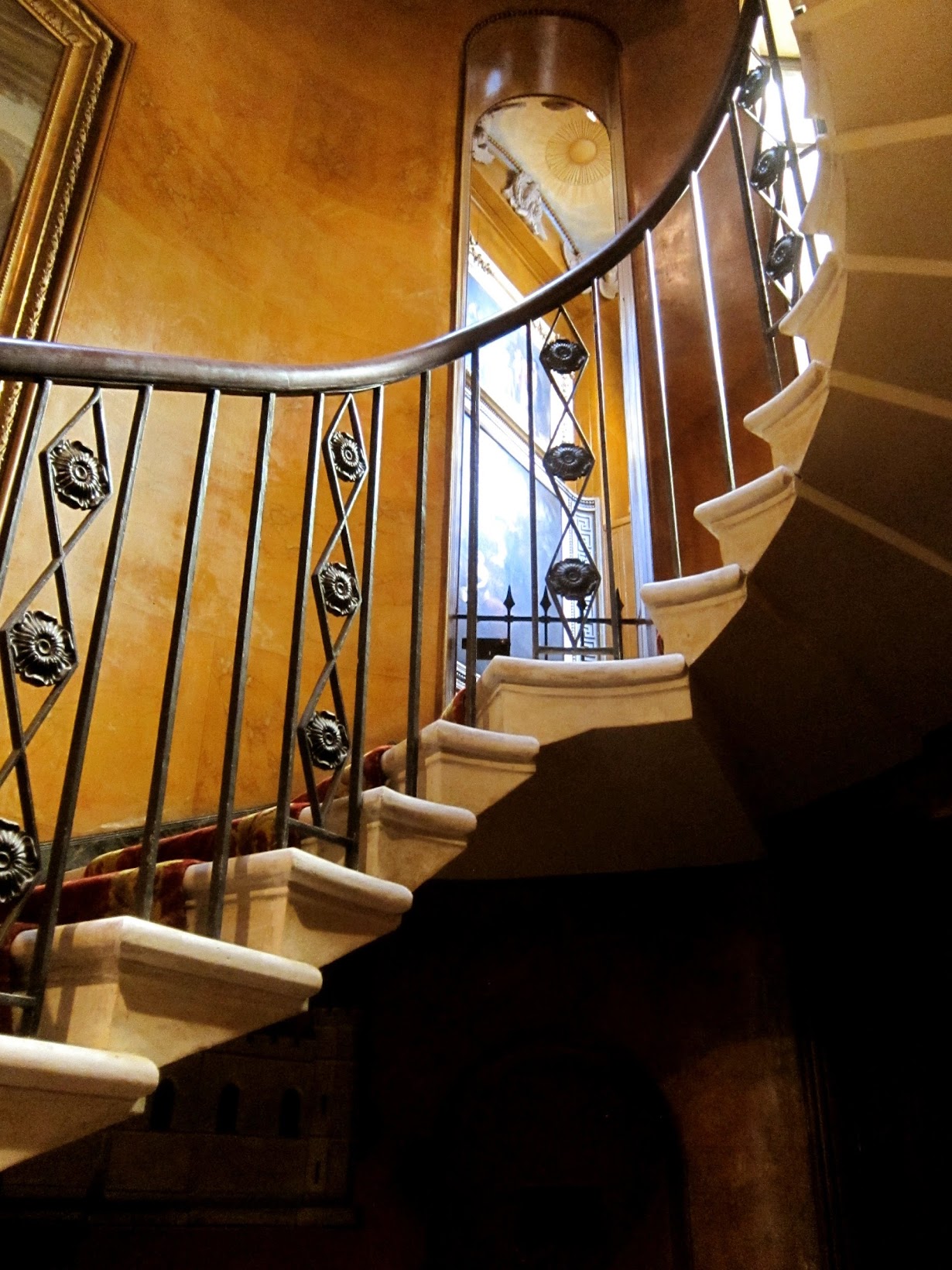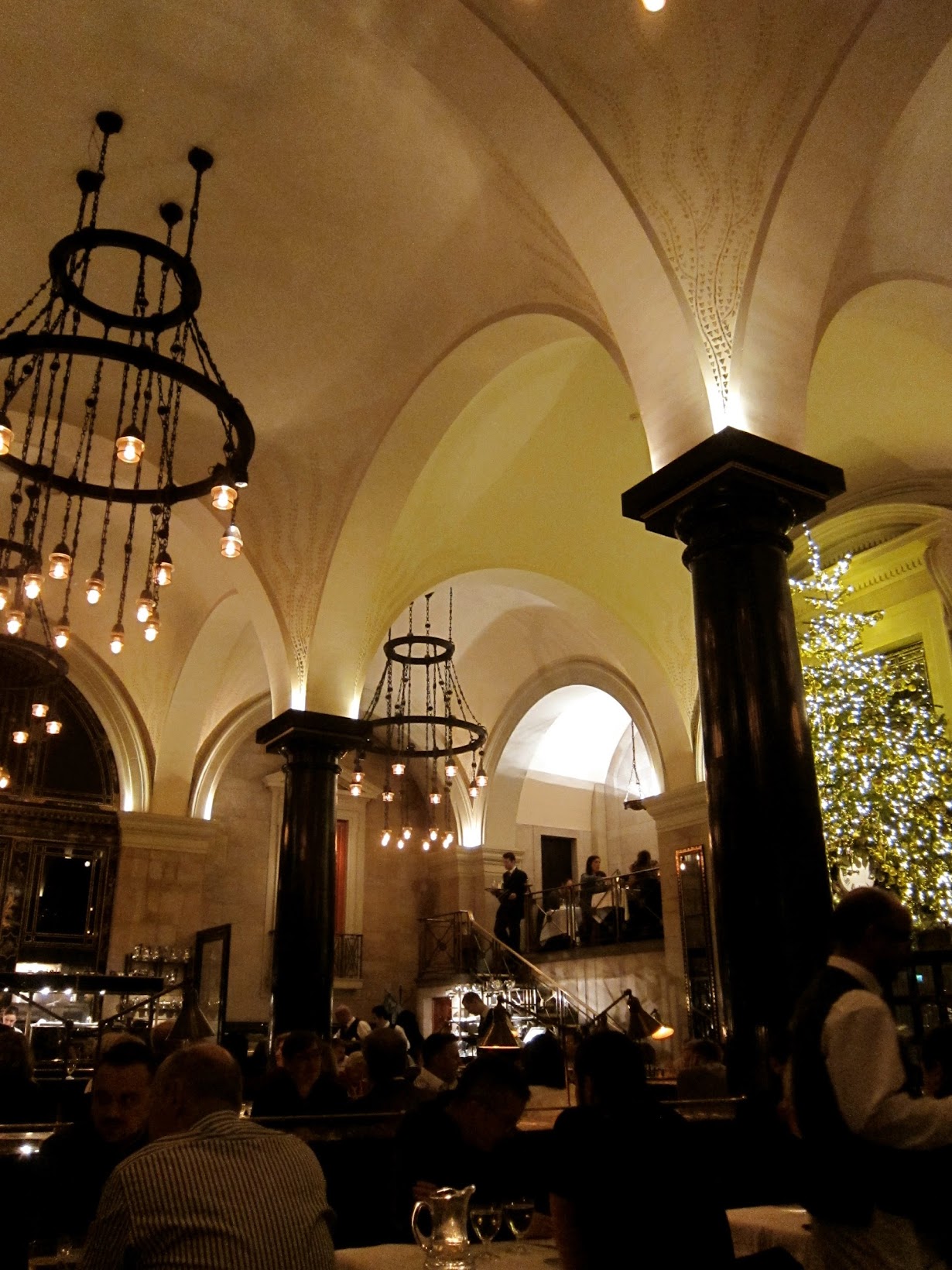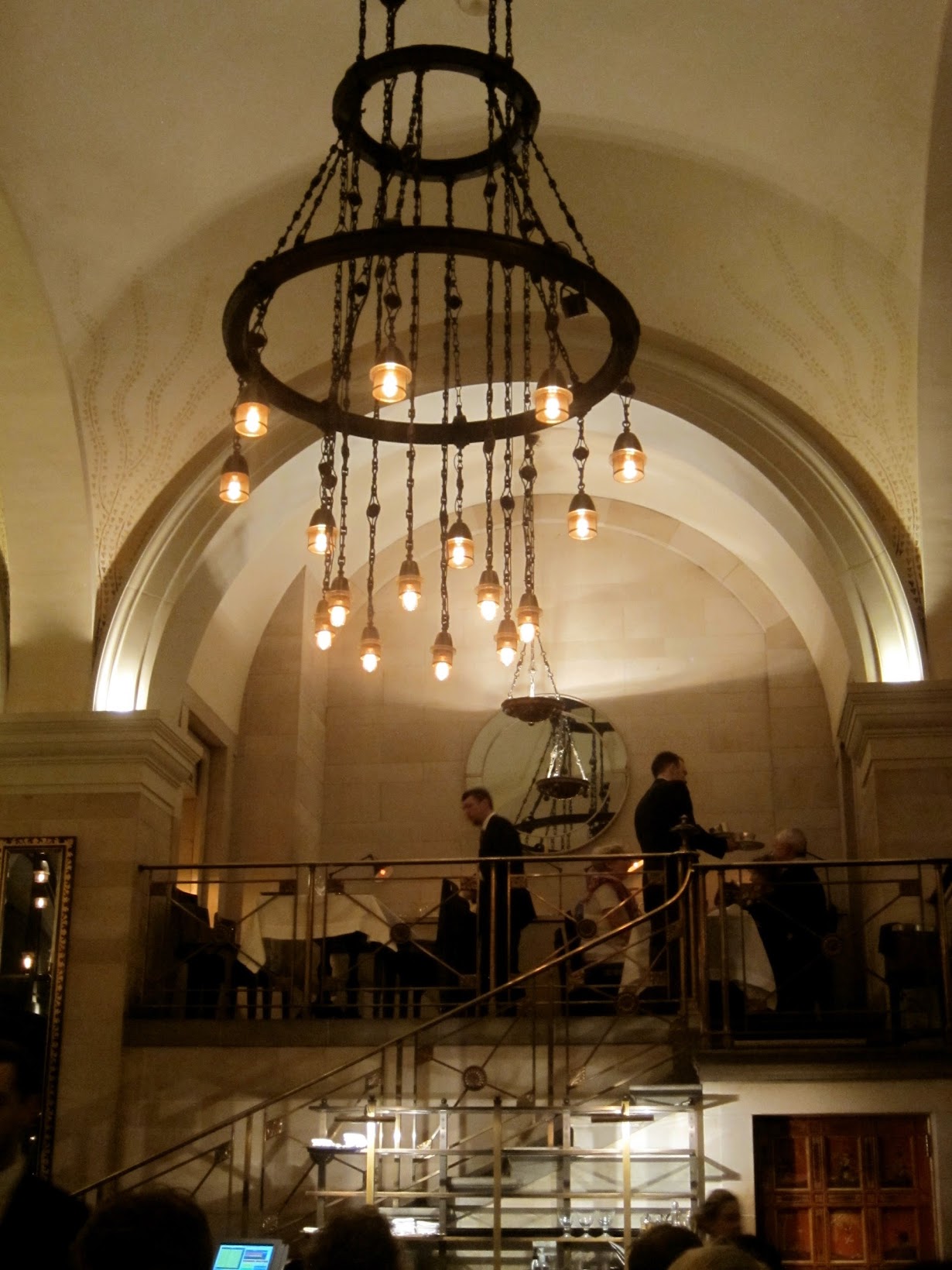Photo: Chronica Domus
Nota bene: Sadly, photography is not permitted inside Sir John Soane's museum. I will, however, include a few unabashedly sneaky (and fuzzy) snaps that I managed to capture with some degree of trepidation and speed before being gently scolded, in the nicest possible way. I hope that these images will provide my readers with an inkling of the spirit of this fascinating museum.
London is full of surprises and to Regency architecture enthusiasts like myself, the city is brimming with handsome examples. I've already mentioned John Nash in my previous post, and his
famous terraces and crescents, and his fine church, All Souls. However, this fair city has indeed been most fortunate, for it has reaped the riches of more than one stellar architect to help shape its appearance. Take, for example, Sir John Soane.
Sir John Soane by John Jackson, circa 1828
I have long admired Soane's work, whom many regard as England's greatest Neoclassical architect. Alarmingly, many of his creations have vanished through the short sightedness of demolition, all in the name of modernity. To most, their discovery of Soane probably comes as a result of visiting his extraordinary former residence at Lincoln's Inn Fields. This, of all of London's surprises, has captured my imagination and intrigued me like no other. I know I am not alone in this. One-hundred and twenty thousand visitors passed through the buildings' doors last year. Mr. Soane's fascination with the ancient world, and his willingness to eschew the architectural conventions of the day in order to create beautiful and unique spaces, made him a true original and a pioneer in his field. His clever use of roof lanterns, colored glass, and mirrors to illuminate the interiors of his buildings, is a common theme he relied upon throughout his career. I cannot truthfully tell you how many times I have had occasion to visit his former home, really an idiosyncratic hodgepodge of buildings (for there are three) because, frankly, I have lost count. What I can tell you is that with each visit, more and more of the house is revealed through the series of extensive restoration efforts undertaken by the trustees.

The entry door to the museum - one of four Gothic architectural fragments, seen at right, gives a clue to what surprises lay beyond the threshold
Photo: Chronica Domus
Never has the misfortune of a pair of renegade brothers been so advantageous to a nation such as befell Sir John Soane's sons, John and George. You see, their father had the good foresight to bequeath his unique residence and substantial collections of antiquities, artworks, furniture, and architectural salvage, not to his wayward sons but to the British people. This is why today the house is a museum, left mainly intact, just as Soane had wished it, for all to enjoy. The space is nothing short of captivating, and the curious labyrinth of rooms, which was constantly expanded and rebuilt during Soane's lifetime is, without doubt, unlike any other place I've ever stepped foot in.
My husband and I orchestrated our latest visit to coincide with an early afternoon tour of the restored private apartments and architectural model room, freshly opened to the public in May, 2015. We had allowed ample time to meander and wander around the numerous rooms of the museum and reacquaint ourselves with the staggering collections so uniquely and densely displayed. The arrangement of objects, depending upon one's perspective, can either border on absolute madness or sheer brilliance. You decide. Just take a gander at this corner of Soane's little study, located on the ground floor, just beyond his dressing room:
Photo: Chronica Domus
And this, a view looking up from the basement:
Photo: Chronica Domus
Not an inch of the house escaped Soane's attention to detail and burgeoning collections. The following photograph shows the narrow passageway between his bookcases and the front three upstairs windows of the south drawing room. This is the most formal room in the house, which also served as the principle reception room.
Photo: Chronica Domus
The following photograph shows the ceiling treatment, reminiscent of a starfish, used in the airy breakfast room of Number 12. Surely, a favorite motif of Soane's because he decorated the library ceiling of his country house,
Pitzanger Manor, in much the same fashion.
Photo: Chronica Domus
The entire museum is dimly lit, which is especially noticeable on an overcast winter's day where natural light is at its lowest and struggles to find a way in. Electrical lighting is kept to a bare minimum, a conscious decision by the museum, so visitors can best experience how Soane lived. One will occasionally notice glass storm bowls lit with the aid of a single candle. To be more accurate, the wax candles I recall from prior visits have, sadly, disappeared, only to be replaced by those battery operated flickering impostors. I wonder if Mr. Soane would have approved.
A corner of the basement crypt lit by modern battery operated candles
Photo: Chronica Domus
Our group of ten was escorted up to the second floor of Number 13.
Photo: Chronica Domus
We gathered on the landing and listened to the knowledgeable guide talk about Soane's private life and how he used the floor not only for his living quarters, but also as a show piece for prospective clients.
The many watercolor drawings of the private apartments, still in existence, aided the museum in their restoration of the rooms, which had, since Soane's death, been altered by the live-in curator of the museum. Nothing was left to interpretation. If evidence was lacking on the manner in which an area should be restored (such as with the closet in Mrs. Soane's morning room that was used for washing), it was left undisturbed.
Joseph Gandy's watercolor of Soane's bathroom, circa 1825
What struck me about this portion of the house, hidden behind iron railings, was how different in appearance it was to the downstairs areas. This was all so
cozy. I am certain that the bold diaper patterned wallpaper employed in each of the private rooms, a departure from the painted plaster walls elsewhere in the house, had much to do with this. Our guide explained that during the two year research period of the restoration project, wallpaper was unearthed beneath layers of paint in the room that Soane had used as his bathroom. The discovery provided more than enough evidence to determine the paper's pattern, a small repeating geometrical motif. Alas, the only mystery remaining was the true colorway which had altered considerably in the ensuing years since its installation, by way of age and fading. A search of the archives at the Victoria and Albert Museum provided a record of Sir John's wallpaper purchase from Cowtan & Son. Not only that, but a small wallpaper sample had been safely squirreled away from the damaging effects of daylight. This provided the museum with an exact color match which was faithfully and meticulously reproduced through hand blocking by Adelphi Paper Hangings in New York, makers of historic wallpaper.

An image of the Cowtan & Son wallpaper order book showing a sample of Soane's wallpaper order from August 11, 1830
The first room our group was escorted into was Mrs. Soane's morning room, the most personal space in the entire house. It is decorated exactly as Mrs. Soane had left it, with the addition of a few paintings that Sir John added after her death. One of these is a watercolor by Clara Maria Pope depicting Shakespeare and every flower mentioned in his works. Even in such an intimate space, Sir John's influence abounds. The arrangement of the artwork and the convex looking glasses strongly suggest that he had a dominant hand in the decoration. On the mahogany mirrored panel door, which leads to the model room, hangs yet another convex mirror, a trick Soane relied heavily upon in his work to maximize natural light. This room was not only used to receive Mrs. Soane's guests, but also as a place from which to run the household. Meetings with the housekeeper to discuss menus and to communicate Mrs. Soane's instructions was a daily activity in the morning room.

Watercolor of Soane's model room by C.J. Richardson, circa 1834
A few years before Sir John's death, he converted Mrs. Soane's bedroom into a spectacular showpiece, the model room. This was my favorite room of the tour. I believe this had everything to do with the fact that there was absolutely no doubt as to it's creator. All the hallmarks of Mr. Soane's interests and curiosities with the ancient world and its buildings blissfully collided in a delicious melange within the room. Upon the wallpapered walls hang architectural watercolors by Joseph M. Gandy, some depicting Soane's own designs. Central to the room sits a magnificent mahogany and brass display stand, commissioned by Soane in 1826. The multi-layered structure holds various architectural models constructed of wood, plaster, metal, and cork. At one point in the museum's history, the curator deemed the stand too large and, shockingly, had it cut down to half its size. For the restoration of the model room, the missing section was skillfully recreated to match that of the original. Soane's idea behind the model room was to provide a "grand tour" experience for architectural students that were themselves unable to travel to Europe and visit such sites as Pompeii and the ancient temples of Italy and Greece. Some of the models on the stand illustrate Soane's designs, thereby encouraging comparison and discussion among his students with those of both the ancient world and works by Soane's contemporaries. Sir John relied heavily on models during his career, something other English architects were slow to adopt. No wonder the museum is awash in them; there are over one-hundred in residence.

Another watercolor by Joseph Gandy showing Sir John's bedroom, circa 1825
Soane's bedroom was the final room we toured of the private apartments. Following his death, the four-poster bed had been sold by the trustees, but a reproduction was specially commissioned for the purpose of the restoration project.
At the conclusion of the tour, one passes through the book passage and notices an unusual display case containing the mummified remains of a rat and two cats. Our guide explained that these poor creatures were found within the walls of a demolition project that Soane had undertaken during his work at the Bank of England, the subject of a future posting on this blog.
Having had the privilege of viewing Soane's private apartments after many years of familiarizing myself with the public rooms downstairs, I felt as though I understood the man a little better for it. Sir John obviously had a great passion for architecture and learning that went far beyond mere vocation. Yes, the private apartments were certainly more domesticated in appearance, and decidedly more cozy than the lower floors, but here, all around, was evidence of a man who could not be separated from his passions, even in the way he lived privately.
Touring the private apartments and model room was the highlight of our visit to London, and one that I would encourage you to experience firsthand as well if you are as fortunate as I to find yourself in London. Please do
check the museum's web site for specific tour times to avoid disappointment. I eagerly anticipate my next visit as the restoration project progresses into its final phase.
We exit through another door, Number 14, painted a beautiful shade of bronze green and embellished with imitation bronze nail heads to mimic those found on ancient tomb doors
Photo: Chronica Domus
The excitement of our day was not quite over. We had scored a table a deux at our beloved favorite London restaurant later in the evening so returned home to dress for dinner.
The Wolseley is located in St. James' along Piccadilly
Photo: Chronica Domus
The Wolseley is one of those surprises I spoke of earlier in this posting. You see the elegant space currently occupied by the restaurant was once the very glamorous car showroom of The Wolseley Motor Company.
An image of the showroom in the early 1920's
Although both the motorcars and the company have long disappeared, not much has changed since the showroom was opened at the beginning of the glitzy Roaring Twenties. One truly feels as though one has taken a step back in time upon entering this lovely building. Designed by architect William Curtis Green, the space possesses a graphic black and white marble floor, towering black lacquered columns, staircases, industrial looking chandeliers, and sweeping arches to full dramatic effect. Simply put, dining at The Wolseley is a grand sensory treat.
Thankfully, the main dining hall of The Wolseley has barely changed since its conversion from a motorcar showroom in 1921
Photo: Chronica Domus
We've enjoyed both lunch and dinner here over the years, and would highly recommend either. Apparently, breakfast is not too shabby either. We have found the service to be top-notch and professional, and the food fresh and delicious. I would best describe the fare as a combination of traditional British with more than a dash of grand European caf
é. The atmosphere is always abuzz with excitement as patrons tuck into their meals. People watching, of course, is always a fun pursuit here. One never knows with
whom one might rub shoulders.
One day I shall score a table upstairs in this dramatic dining alcove, but first I'll have to invite some friends because, according to our waitress, only larger parties are seated here
Photo: Chronica Domus
Legging it to the tube station to catch our late-night train home, we passed this exotic and opulent display of lights on Bond Street. This was all rather fitting, I thought, for Bond Street is home to some of the world's most exclusive and luxurious consumer goods.
Photo: Chronica Domus
I do hope you've enjoyed this rather wordy post on two of my favorite spaces and places to visit in London. Perhaps you'll put them on your list of "must sees" the next time you find yourself in town.
Nota bene: I am neither paid nor do I receive recompense in exchange for applauding products or services within my blog. I do so because I enjoy them. If you are a kindred spirit, you too enjoy recommending nice things to fellow good eggs.






























